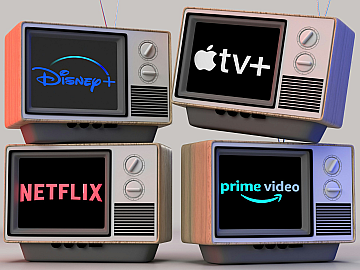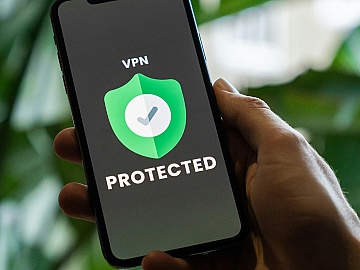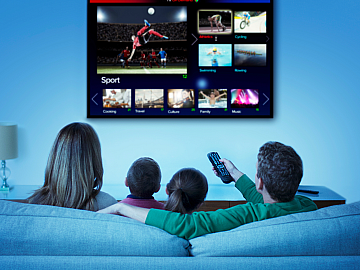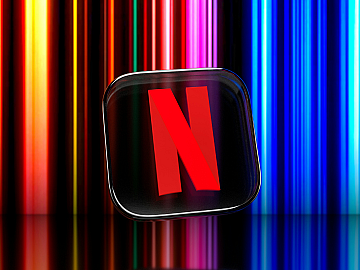Uncover the best techniques to unlock the full potential of your explainer videos.
Explainer videos are an incredibly effective tool for conveying your brand’s message to a wide audience. When done right, they can significantly boost brand awareness, drive business growth, and increase conversions.
In this article, we will explore the key components that contribute to the success of explainer videos. Additionally, we’ll delve into the optimal length for these videos and how it varies across different platforms.
What Makes a Great Explainer Video?
Engaging explainers all have one thing in common…
A Great Script
The script is the backbone of any explainer video. It is essential to not just list the features of your product or service but also to explain how those features benefit the consumer. A great script goes beyond mere explanation and incorporates techniques like humour, storytelling, and wordplay to capture the audience’s attention. Crafting a compelling script, with the assistance of a proficient video maker, is crucial to ensuring the effectiveness of an explainer video.
To create a great script, start by understanding your target audience and their pain points. Identify the key messages you want to convey and brainstorm creative ways to communicate them. Use storytelling techniques to engage the audience emotionally and make your video more memorable. Incorporate humour where appropriate to keep viewers entertained and interested. Whether writing the script yourself or through professional scriptwriting services, remember that a great script should be concise, clear, and engaging.

Here’s the structure:
Hook
A great video requires a great hook! In fact, most social media platforms report attention dropping significantly after the first 3 seconds of a video. So, start with a bang – peak your audience and make them think, ‘Ooh, what am I watching?!’
TIP: A single hook is the bare minimum for a great video. We suggest adding in little hooks all throughout the video to get the best chance of playthroughs.
Problem
Analyse your target audience and identify a strong problem or pain point they experience and then motivate them to find a solution. Do this by developing a problem statement that’ll really resonate with the people you’re trying to reach.
Hint: don’t retrofit a problem statement that just leads to your product/service as the obvious solution – they have to feel seen first.
Solution
“The solution is [insert your product/service here]!” Try to get creative with how you present this, as this is your chance to really sell your brand as the ultimate solution to the problem identified earlier on.
Reflect back on your key messages, as it’s important that your solution aligns with the rest of your marketing and branding too.
Tip: your audience needs to trust you before you try to make the sale.
Call to Action
Providing a CTA at the end of your video clearly tells your audience what the next step is that you want them to take.
For example, “Click the link in the description below to find out more.” That’s one of the easiest ways to give your viewer the chance to explore your brand more if they want to.
There are plenty of other options of course, so feel free to get creative and use language that matches your brand – for example, if you have a chatty, conversational tone, you could say, “Hit the button below and send us a message, we’d love to chat with you!”
TIP: It’s important to consider the placement of your video here. For example, if your video is going to be displayed on your website (which we 100% recommend), avoid phrases like “visit our website” and try to use something that makes sense in multiple contexts, or just write a bunch of different outros.
Read more: How to Write a Voiceover Script
Talent
Choosing the right talent is as important as having a great script. The delivery of the script relies on the performance of the talent. While using in-house talent can be cost-effective, it may not always yield the desired results. Hiring professional actors can be expensive, but it often pays off in terms of the quality and impact of the video. Hiring actors provides more creative control and allows for pushing the boundaries of creativity, resulting in engaging and memorable explainer videos.
When selecting on-screen actors or voice actors, consider factors such as their ability to convey the message effectively and their suitability for your brand’s image/ sound. Conduct auditions or review demo samples to assess their performance skills. Collaborate closely with the talent during the production process to ensure they align with the intended tone and style of the video. Remember, the right talent can elevate your explainer video to new heights.
Visual Appeal
An explainer video should not only have a great script and concept but also be visually engaging. Visual engagement encompasses various aspects such as storyboarding, art direction, editing, lighting, and props. However, it is crucial to maintain the audience’s attention through proper pacing and the effective use of hooks throughout the video. Striking a balance between audio and visual cues is vital to prevent viewers from losing interest.
Storyboarding plays a crucial role in the video production process, visualising the scenes and ensuring a coherent flow of information. Shown as a shot-by-shot layout of what your video will look like, a storyboard breaks down your vision into small, bite-sized pieces, showing each scene frame-by-frame. The storyboarding process allows you to organise your shots, create a smoother narrative, and more importantly, allow the rest of your team members to visualise the concept and final output. This also makes your editing flow a dream!
During the editing process, focus on maintaining a smooth and engaging narrative. When filming, employ the use of clever transitions, visual effects, and different set layouts to enhance the storytelling. Additionally, ensure that the video is properly lit and the art direction is relevant to the message you want to convey. Visual appeal is a powerful tool for capturing and retaining the audience’s attention.

How Long Should Your Explainer Video Be?
The ideal length for an explainer video is between 1.5 and 2 minutes. This duration provides enough time to spark interest, convey key information, and leave viewers wanting to know more. It is essential to grab the audience’s attention early on by using a compelling hook. The goal is to strike a balance between being concise and informative while keeping the video engaging throughout its duration.
Shorter explainer videos, usually around 30-45 seconds, are ideal for brand awareness campaigns. These videos focus on introducing the brand quickly and creating curiosity among viewers. Conciseness and impactful scripting are key to capturing and retaining the audience’s attention within a shorter timeframe.
Optimal Length for Different Platforms
The ideal duration varies from site to site:
TikTok and Instagram
Video ads on TikTok and Instagram are often limited to 15 seconds. Organic content on these platforms can range from 30 to 60 seconds. For maximum engagement, it is crucial to keep the pacing fast and transitions interesting. Instagram reels and stories are particularly effective for shorter videos that make use of captivating visuals.
Facebook and LinkedIn
Marketing videos on Facebook and LinkedIn should ideally be around 1 minute long. Although these platforms accept longer videos, the content needs to be highly engaging to ensure full video views.
YouTube
Videos on YouTube offer the most flexibility in video ad lengths, including 6 seconds, 15 seconds, and 30+ seconds. Shorter ads work well for brand awareness, while longer ads are effective for retargeting. Engaging videos with a touch of humour tend to perform best on this platform.

Maximising the Impact of Explainer Videos
To make the most of an explainer video, consider the following strategies:
Social Media Cut-Downs
To maximise your social media presence, repurpose your original explainer video into shorter segments. This approach allows for consistent posting and ensures that your brand remains top of mind. By tailoring the cut-downs to suit each platform’s length requirements, you can maintain a cohesive brand representation while saving time and resources. Make that video go further!
Clever, Concise, and Clear Messaging
Regardless of the video length or platform, it is essential to be clever, concise, and clear in your messaging. Focus on generating interest and directing viewers to seek further information through your points of contact or website. Cut out any unnecessary content that may dilute the core message of your video. Think about where you want them to go and what you want them to do after watching the video – perhaps you need to create a landing page that encourages them to take action.
Attention to Detail
Crafting a great explainer video requires careful attention to the script, talent selection, and visual appeal. A great script goes beyond simple explanation and incorporates techniques that capture the audience’s attention. Choosing the right talent ensures effective delivery of the script, while visual appeal keeps viewers engaged. The optimal length of an explainer video varies across platforms, and it is crucial to tailor the duration to maximise engagement.
By implementing these strategies, brands can create impactful explainer videos that effectively convey their message, captivate the audience, and drive meaningful results.
Go Global with Video Translation Services
Discover Voiceover Talent for Explainer Videos
Sometimes we include links to online retail stores such as Amazon. As an Amazon Associate, if you click on a link and make a
purchase, we may receive a small commission at no additional cost to you.
















